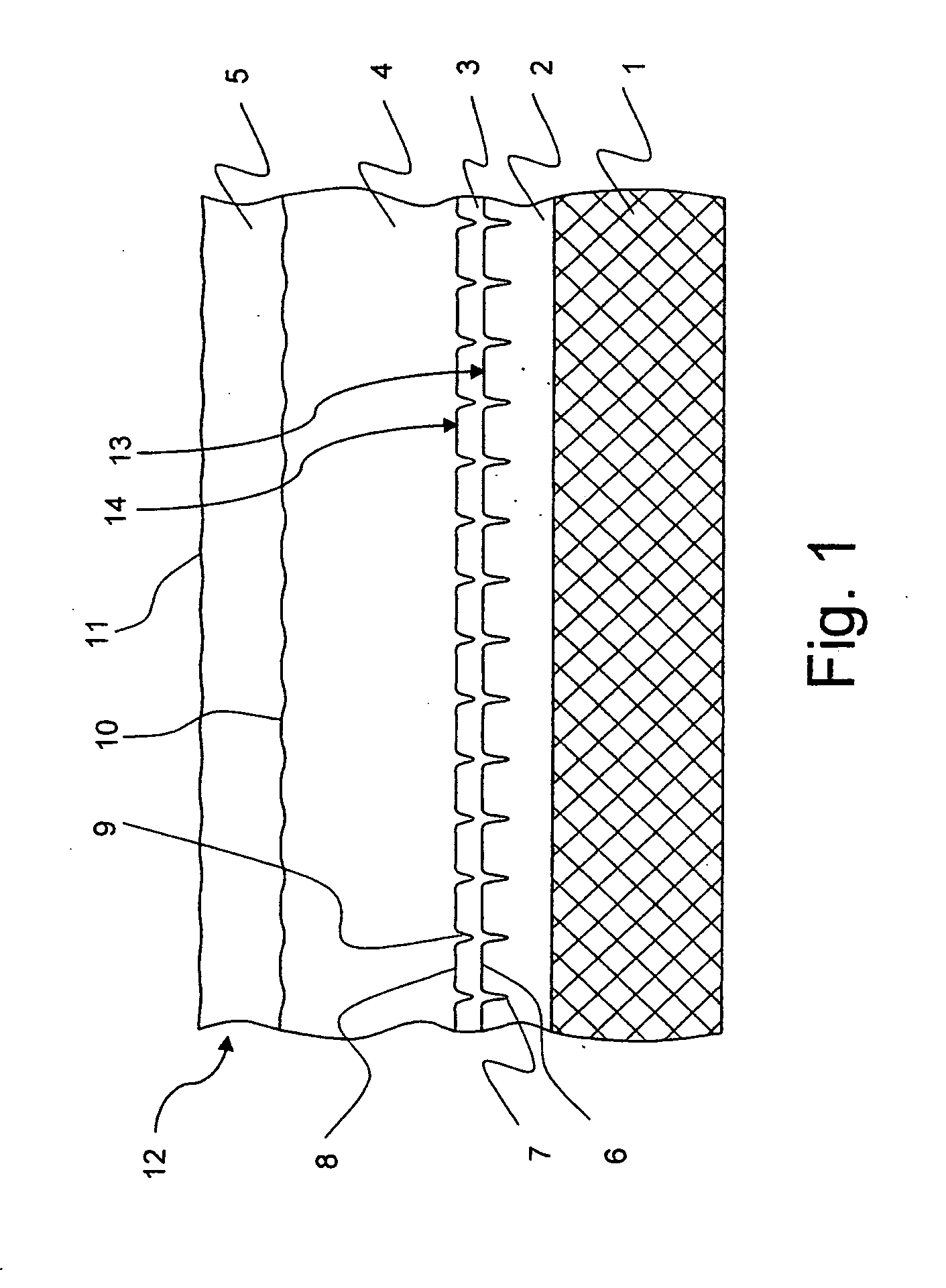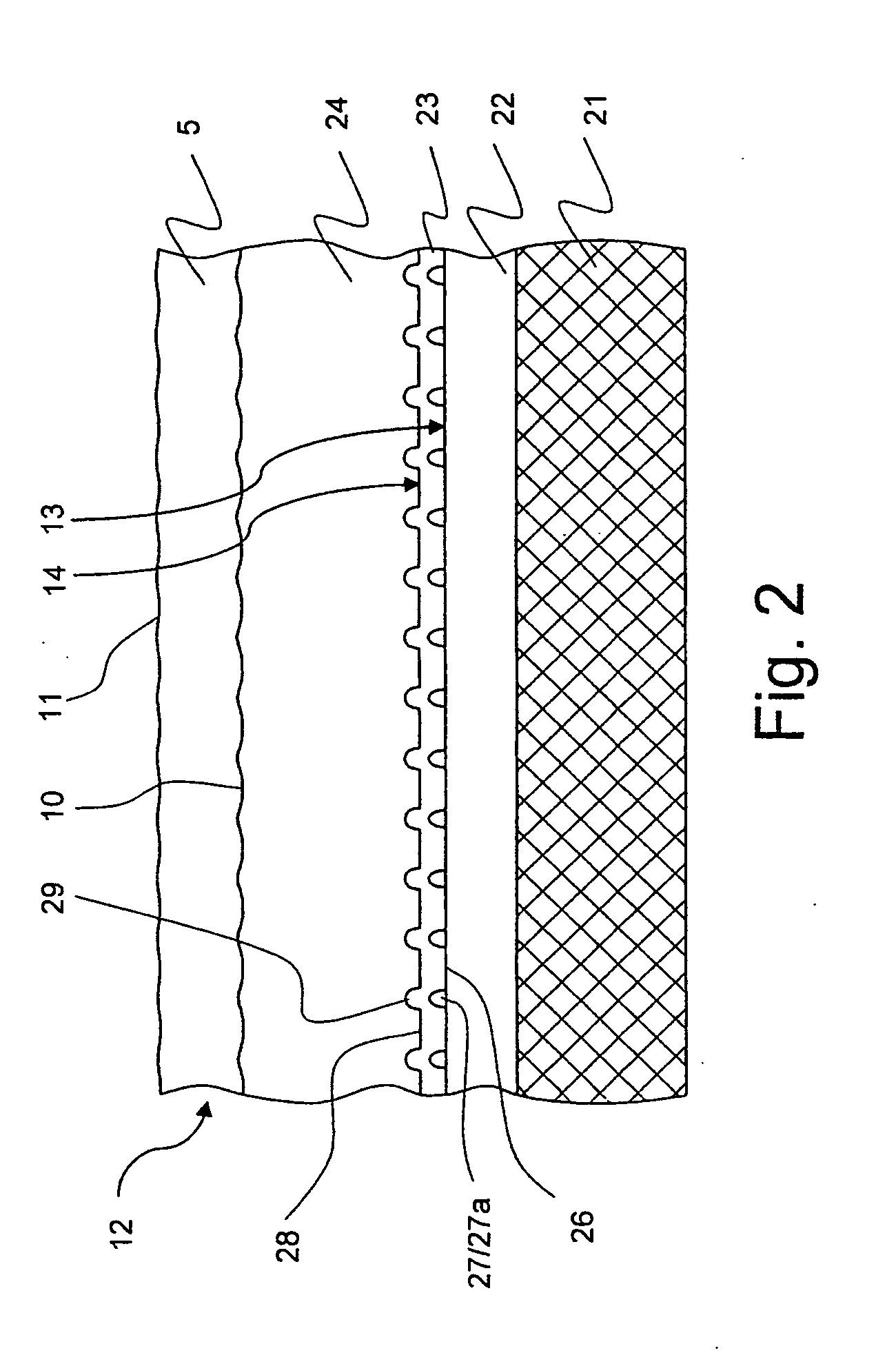Method for producing a HTS coated conductor and HTS coated conductor with reduced losses
a technology of hts coated conductors and hts coated conductors, which is applied in the direction of superconductors/hyperconductors, superconductors/coils, magnetic bodies, etc., can solve the problems of low temperature superconductors (typically used in this area) reducing the critical current and critical magnetic field, electrical losses, and insufficient current performance of low temperature superconductors. achieve the effect of high efficiency in the area
- Summary
- Abstract
- Description
- Claims
- Application Information
AI Technical Summary
Benefits of technology
Problems solved by technology
Method used
Image
Examples
second embodiment
[0062]FIG. 2 shows an inventive HTS coated conductor 12. For simplification, only the differences as compared to FIG. 1 are explained in detail.
[0063]On the basically flat substrate 21, a basically flat buffer layer 22 has been deposited. In order to obtain a roughened surface 13, roughening structures 27 of local deposit type (here resembling islands or humps) have been placed on the buffer layer surface. The material of the local deposits 27a is Pt, for example, deposited via vacuum cluster deposition technique using a Knudsen evaporation cell. Between the local deposits 27a, flat surface area 26 remains.
[0064]On top of the roughened surface 13 (including the local deposits 27a), a closed intermediate layer 23 has been deposited. Its surface 14 imitates the roughened surface 13, exhibiting hump like reproduced roughening structures 29 and reproduced flat areas 28. Note that the aspect ratio of the reproduced roughening structures 29 is somewhat lower as compared to the roughening ...
third embodiment
[0070]FIG. 4 shows an inventive HTS coated conductor 12. Only the major differences with respect to FIG. 2 are discussed, for simplicity.
[0071]The substrate 21, the buffer layer 22, the roughening structures 27 and the intermediate layer 23 correspond to the embodiment shown in FIG. 2. However, the HTS layer 65, which is deposited on top of the intermediate layer 23, has been roughened, resulting in a further roughened surface 15. The roughening of the further roughened surface 15 has been done by depositing material on top of the HTS layer 65, i.e. further roughening structures 66 have been provided, here formed as further local deposits 66a on the surface of the HTS layer 65. It should be noted that the surface of the HTS layer 65 is somewhat wavy anyway, due to the roughened surface 13 (see slightly curved areas 73 between the roughening structures 66), but not wavy enough to guarantee flux pinning above, therefore the roughening was repeated.
[0072]A closed further intermediate l...
PUM
 Login to View More
Login to View More Abstract
Description
Claims
Application Information
 Login to View More
Login to View More - R&D
- Intellectual Property
- Life Sciences
- Materials
- Tech Scout
- Unparalleled Data Quality
- Higher Quality Content
- 60% Fewer Hallucinations
Browse by: Latest US Patents, China's latest patents, Technical Efficacy Thesaurus, Application Domain, Technology Topic, Popular Technical Reports.
© 2025 PatSnap. All rights reserved.Legal|Privacy policy|Modern Slavery Act Transparency Statement|Sitemap|About US| Contact US: help@patsnap.com



